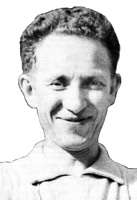
|
The Society of Folk Dance Historians (SFDH)
Why Folk Dancing?
[
Home |
About |
Encyclopedia | CLICK AN IMAGE TO ENLARGE |

|
Folk dancing has been taken from the shelf and is realized to be something of great value aesthetically, historically, and nationally.
Everything that exists, be it animate or inanimate, a simple object, a story, a human individual, a community of persons or a nation, reaches that sage in its development which is called the climax. At this point, the object, the story, the individual, the community, or the nation, retrogresses into oblivion or develops further to a certain greatness or permanency. Those things of worth which sink into oblivion are remembered only because they are preserved in museums. Some of these are later to be resurrected to become again of almost as much importance as they were in their beginning. In this category we place the art of folk dancing, which has entered into its period of Rennaisance.
Folk dancing is the creation of the people, of the masses, and not of the individual. In folk dancing, the workers and the serfs spent their leisure hours, to find in them the pleasure of social intercourse that was almost entirely denied them in their ordinary lives. Among those nations which were subject to foreign rule and great cultural an economic persecution, the dance remained as the one pleasure of their lives; the one activity in which they could forget the burdens laid upon them and feel something of the joy of life. They would wipe their tears away with a dusty apron or with a hand blackened by toil, unable to resist this one call to merriment that they could answer.
Each nation tells us of its national origins and of the national life in the form of its folk dance. Those who have ruled with the heavy hand have dances that are haughty in character; those upon whom the heavy hands have fallen have dances of an insuppressible gaiety. Even the geographical characteristics of a nation's country can be found in the style of its dance. Those who live in countries that are mountainous have a measured slowness in the tempo of their dance, and those who live on the level lands have the freedom of the open plain clearly expressed in the style of their dance.
During its period of near oblivion, the folk dance became infantile in its form. It was looked down upon as no true form of national art, as something to be neglected and further discouraged. This view on folk dancing came from its having been associated with the country people, with the unlettered peasantry who are too often forgotten in their position of being the very foundation of a national group. The burghers, in their position of superiority, did no folk dancing, but ridiculed it as the childish recreation of the peasants. And the poor peasant who too often apes the prejudices of the city folk, also came to avoid this purest of national arts, and helped it further into its oblivion. Such was the fate of many of the folk arts, notably weaving.
EVOLUTION OF THE DANCE FORM
With the passing of folk dancing it was necessary that another dance form be found for the entertainment of the urban population. From this necessity there was evolved the dance form known as social dancing, which is too subdivided in types to be easily classified as a national art. These forms are best represented by the fast-tempoed polkas in the East of Europe, the slower-tempoed polka and the waltz in other nations, the graceful tango and the tremulous rhumba and ragtime dances of the faddists.
In America, it is the last of the aforementioned forms that is most popular. There are no set rules to follow. The variations that come into existence for a time are but fads that too often are vulgar to an extreme. This type of dancing is lacking in beauty and can carry no tradition with it. It is a dance form for the individual, not a form into which everyone can enter as he can enter into the folk dance where so much sincere joy is created.
With the passing of folk dancing, the loss of something fine was felt, the loss of something with which one could be genuinely entertained. Too much ragtime and too much dissipation have come to sour the mouths of those who dance, and so they look back to the dances of their ancestors to find in them the true beauty and the lasting pleasure which is there.
Folk dancing has been taken from the shelves, it has been dusted clean to that it can be seen to be not just a silly "ring-around-the-rosie" dance form, but something of great value aesthetically, historically, and nationally. It can be said that folk dancing is the one form of the dance that will survive, regardless of how often it may be pushed aside to make way for the faddists. Each time it is resumed it is entered into with greater enthusiasm.
Our knowledge of the various national folk dance forms will improve our knowledge of the national groups they represent, and when we are in the company of some particular national group, we can derive the pleasure that comes form knowing that we, too, can take part in their fun – in their dance.
DOCUMENT
- Vyts Beliajus, an article.
Reprinted from "Why Folk Dancing?" by Vytautas F. Beliajus
Viltis Magazine, May 1980, Volume 39, Number 1, V. F. Beliajus, Editor.
This page © 2018 by Ron Houston.
Please do not copy any part of this page without including this copyright notice.
Please do not copy small portions out of context.
Please do not copy large portions without permission from Ron Houston.